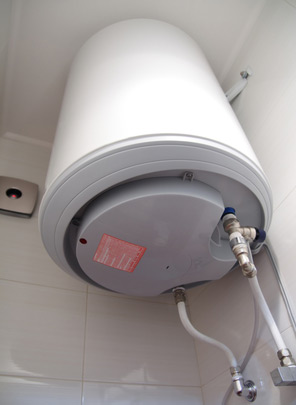Easy Ways to Care for Your Home's Hot Water System ProperlySteps on How to Maintain Your Home's Hot Water System EffectivelyEasy Methods to Care for Your Home's Hot Water System Properly
Easy Ways to Care for Your Home's Hot Water System ProperlySteps on How to Maintain Your Home's Hot Water System EffectivelyEasy Methods to Care for Your Home's Hot Water System Properly
Blog Article
Are you currently trying to locate know-how involving Water Heater Maintenance Tips You Can't Afford to Forget?

Hot water is crucial for day-to-day convenience, whether it's for a refreshing shower or washing meals. To ensure your warm water system runs efficiently and lasts much longer, normal maintenance is essential. This write-up provides practical ideas and understandings on how to preserve your home's warm water system to prevent disruptions and costly repair work.
Introduction
Keeping your home's warm water system may appear complicated, but with a couple of easy steps, you can ensure it runs efficiently for many years ahead. This guide covers whatever from recognizing your warm water system to DIY maintenance suggestions and recognizing when to hire expert assistance.
Relevance of Keeping Your Warm Water System
Normal maintenance not only extends the lifespan of your hot water system but also ensures it runs efficiently. Overlooking maintenance can lead to decreased efficiency, greater power costs, and even early failure of the system.
Indicators Your Hot Water System Demands Maintenance
Recognizing when your warm water system needs attention can prevent significant concerns. Keep an eye out for indications such as inconsistent water temperature, unusual noises from the heating system, or corroded water.
Purging the Water Heater
Flushing your water heater removes debris build-up, enhancing efficiency and prolonging its life.
Monitoring and Replacing Anode Rods
Anode rods prevent corrosion inside the container. Checking and replacing them when broken is critical.
Facility Problems Needing Professional Help
Instances consist of major leakages, electrical problems, or if your water heater is continually underperforming.
Regular Professional Upkeep Perks
Expert maintenance can consist of detailed examinations, tune-ups, and making sure compliance with safety and security requirements.
Inspecting and Changing Temperature Settings
Adjusting the temperature setups guarantees optimal performance and safety.
Do It Yourself Tips for Upkeep
You can carry out numerous maintenance jobs yourself to maintain your hot water system in leading problem.
Checking for Leakages
On a regular basis inspect pipes and links for leaks, as these can bring about water damage and greater costs.
Comprehending Your Warm Water System
Prior to diving right into maintenance jobs, it's helpful to recognize the fundamental components of your hot water system. Typically, this consists of the hot water heater itself, pipes, anode poles, and temperature controls.
Month-to-month Maintenance Tasks
Routine month-to-month checks can help catch small concerns prior to they rise.
Evaluating Pressure Alleviation Valves
Evaluating the stress safety valve ensures it functions properly and protects against excessive pressure build-up.
Protecting Pipelines
Protecting warm water pipelines reduces warm loss and can conserve power.
When to Call an Expert
While DIY upkeep is valuable, some concerns require specialist competence.
Final thought
Regular maintenance of your home's warm water system is important for efficiency, longevity, and price financial savings. By following these suggestions and recognizing when to look for professional help, you can make sure a reliable supply of hot water without unforeseen disruptions.
Water Heater Maintenance Tips
Test the TPR Valve
Shut off the power and the cold-water supply valve. Place a bucket under the pipe connected to the temperature-pressure-release (TPR) valve on the top or side of the tank. (This valve opens if the tank pressure gets too high.) Lift the valve’s tab to let some water out, then let go. If water keeps flowing, drain the tank partway, unscrew the old valve with a pipe wrench, and install a new one. Check the Anode Rod
Put a hose to the tank’s drain cock and let out a few gallons of water. Now fit a 1 1/16-inch socket onto the rod’s hex head on top of the heater (or under its top plate) and unscrew the rod. If it’s less than ½ inch thick or coated with calcium, buy a new one, wrap its threads with Teflon tape, put it back in the tank, and tighten securely. Use this segmented rod if headroom above the tank is limited. Drain the Tank and Wash Out Sediment
Drain the remaining water in the tank into the bucket, then stir up the sediment on the tank’s bottom by briefly opening the cold-water supply valve. Drain and repeat until clean water comes out of the hose. Close the drain cock, refill the tank, and turn its power back on. Adjust the Temperature
Find the temperature dial on the side of the tank and unscrew its cover. Adjust the dial to 120 degrees using a flathead screwdriver. For every 10 degrees the temperature is lowered, you can expect to save up to 5 percent in energy costs. Turn the water heater off or the thermostat down to its lowest setting if you plan to be away from home for more than three days. Insulate the Pipes
Buy some self-sticking 3/8-inch-thick foam pipe insulation that matches the pipes’ diameter. Slide the foam over the hot-and cold-water pipes as far as you can reach. Insulating the cold-water pipe prevents condensation in summer. Peel the tape and squeeze the insulation closed. If the pipe is 6 inches or less from the flue, cover it with 1-inch-thick unfaced fiberglass pipe wrap. https://www.thisoldhouse.com/plumbing/21016402/how-to-maintain-a-water-heater

I was brought to that report on Water Heater Maintenance Tips You Can't Afford to Forget from an acquaintance on a different website. For those who enjoyed reading our post kindly remember to share it. I take joy in reading our article about How to Maintain Your Water Heater & Prolong its Life.
Need Help? Hire Us Now! Report this page